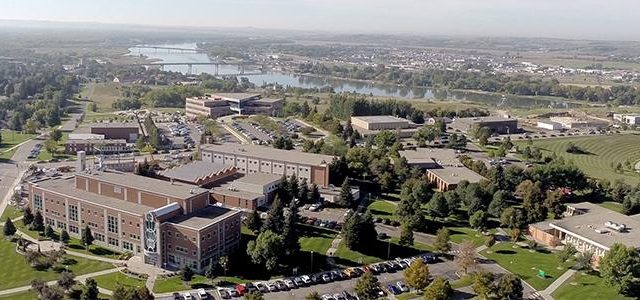Study: Bismarck State College Provides the Best Return on Investment for Students in North Dakota

A new study out from Georgetown University’s Center on Education and the Workforce has some fascinating findings.
The report “ranks 4,500 colleges and universities by return on investment” and includes an online database allowing the public to look up data on their state’s universities.
I’ve also embedded the full report below. The (somewhat clunky) database is here.
“Community colleges and many certificate programs have the highest returns in the short term, 10 years after enrollment, though returns from bachelor’s degrees eventually overtake those of most two-year credentials,” reads one of the top-level, national conclusions from the study.
Thing is that finding didn’t really hold up in North Dakota.
The study uses a metric they call NPV, or net present value, to rank the schools. You can read a definition of that metric here. Mostly it’s a calculation of what a graduate from each institution would earn over and above the price (in both time and dollars) of successfully graduating.
Ranking North Dakota’s public and private institutions (and it’s a comprehensive list, including everything from the four-year research institutions down to Josef’s School of Hair Design) on a 10-year window for NPV shows the top five slots are taken by North Dakota’s public, two-year institutions:
Bismarck State College tops the list, and I think the school might have actually put up even better numbers. Though the study’s authors listed BSC as a four-year institution, they’re really a two-year school. There are some four-year degrees offered at BSC, but they do that by way of partnerships with other schools. In calculating BSC’s NPV, the study’s authors may have used the time cost of four years of attendance when a lot (most?) of BSC’s students get two-year degrees.
That quibble aside, it’s interesting to see the two-year schools come out at the top of the list. We don’t see a four-year school until the University of North Dakota comes in 6th place. North Dakota State University, our state’s other four-year research institution, comes in 10th place, right behind Minot State University.
But that’s ranking by a 10-year measure. Most people see higher education as an investment in long-term success. What happens when we zoom out to 40 years? The four-year institutions do better, but the two-year schools hold their own. In fact, Bismarck State College is still at the top of the list, and four of the schools in the top ten offer two-year degrees (click for a larger view):
These ranks are interesting, though what they mean is pretty subjective. They are generalizations, but students are individuals who represent a unique set of desires and talents and abilities. The University of North Dakota has a medical school, but not every North Dakota student needs a degree in a pre-med major (this study didn’t look at advanced degrees). Not every student wants to be a doctor.
Bismarck State College comes in at the top of this list, and that’s great, but not every student is going to want or need the sort of degrees BSC offers either.
Wherever a student chooses to get their education, what’s important is to focus on efficiency. Which institution can put you on the career track you want to be on in the most efficient way.
Some students may see value in paying a premium to obtain a degree from a prestige university.
Other students with other priorities are going to be just fine at Josef’s School of Hair.
When it comes to deciding what your priorities are, though, what this data shows is that in the short term, a career based on a two-year technical degree will pay off much earlier in your life and, even long term, won’t leave you all that far behind the careers based on a four-year degree.
[scribd id=435159371 key=key-2LZUzAckZ15MoLzICFAA mode=scroll]






